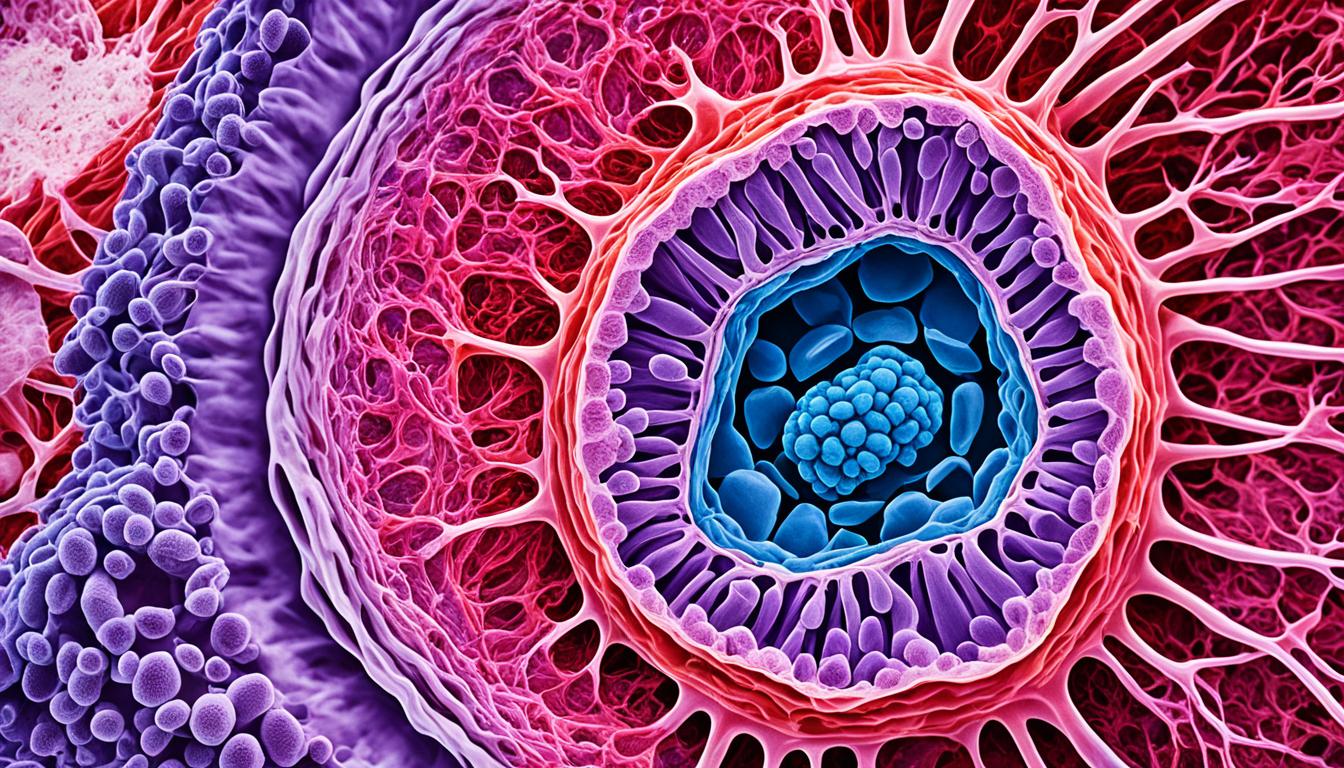Soft tissue sarcoma is cancer that starts in the body’s muscle, fat, and other soft tissues. These tumors can show up in different places but are often found in the arms, legs, chest, or abdomen. The main sign is a lump or swelling, but in some cases, there might not be any symptoms early on.
<!—->
Key Takeaways:
- Soft tissue sarcoma is a type of cancer that begins in the supportive tissues of the body.
- The tumors can occur in various locations but are most commonly found in the arms, legs, chest, or abdomen.
- A lump or swelling in the soft tissue is a typical sign of soft tissue sarcoma.
- Symptoms may not manifest until the tumor grows larger and starts to impinge on nearby structures.
- Early detection and diagnosis are crucial for effective treatment and management of soft tissue sarcoma.
Stem Cell Therapy for Soft Tissue Sarcoma
In soft tissue sarcomas, cancer stem cells are a big issue. They make treatments less effective and tumors come back more often. Now, researchers are looking into stem cell therapy. This new method targets the cancer stem cells directly. It aims to stop them from spreading and growing.
Some treatments using stem cells, like doxorubicin and olaratumab, have shown good results. They’ve improved how long patients live. This brings hope to people fighting soft tissue sarcomas.
The field of stem cell therapy is changing fast. Ongoing studies are looking into how it can help with soft tissue sarcoma. As we learn more about cancer stem cells, new treatment plans are taking shape.
Scientists hope to change how we treat soft tissue sarcoma by using stem cells. This could lead to better outcomes for patients. It’s an exciting time in cancer research.
Keep an eye out for updates on how stem cell therapy is changing the game for soft tissue sarcomas.
Advances in Diagnosis and Research for Soft Tissue Sarcoma
In the past few years, big steps have been taken in understanding and treating soft tissue sarcoma. With the help of detailed studies on genes and molecules, scientists now know more about this cancer’s various types. This knowledge unlocks better ways to treat the disease.
A major discovery is cancer stem cells in sarcomas. These cells are key in why some tumors resist drugs and come back after treatment. Understanding how they work is leading to new, pinpointed treatments.
Worldwide cancer data sheds light on sarcoma’s impact and how often it occurs. This information helps tailor treatment plans to fight the cancer more effectively. It also pinpoints areas for further exploration.
Thanks to these new findings, there’s real hope for better outcomes for sarcoma patients. By looking at cancer on a molecular level, focusing on cancer stem cells, and using global data, we’re improving how we fight this disease.

